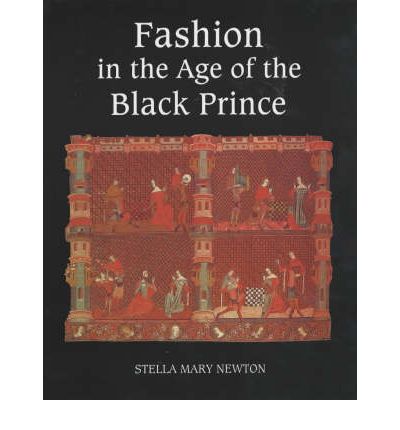
by Stella Mary Newton
When it comes to finding information about clothing in the 14th century, there’s a couple of different places to get that information.
There’s larsdatter.com for manuscript images. There’s various blogs around the place (like, Farmboy, Fetch me that pitcher which is about fitting sleeves in 14th C outfits but has other really useful links about 14th clothing.) Effegies And Brasses gives some more examples about… well effegies and brasses actually….
But when it comes to the analysis of clothing from written sources in the age of Price Edward (aka the Black Prince) is THE best book for 14th C re-enactors. It refers only to sources that are without question between 1340-1365, and everything is well referenced back to the original source, from wills, to laws, to poems and descriptions of events. (it has an amazing index. If the word is mentioned in the book, it gets referenced in the index, which is good, because I do not know how I would find things otherwise, since I am a flicker through and skim reader and there are many, many words per page, in two columns per page in this book, in length chapters. I would find nothing without the index.)
It has references to the clothing that the royals wore, and more unusually, references to the livery (clothing handed out as part of salaries to staff) and the dress of the poor. It talks about the different qualities of cloth available and the various sumpteries laws put into place
The lepers should always be clad in the clothes of russet, and enjoy the aforesaid rules forever.
It talks about how much things cost
But it’s super dry. It’s a very academic, very factual text in which written and illustrated images are distilled down. It’s a good reference book and I personally found it super fascinating to get these details which I didn’t know. (Like the beaver hat trimmed with ermine, with a silver dolphin on it’s crown presented from the dauphin to his father’s fool Jean in 1351. WHAT IS THIS EVEN?)
One day, I’m going to get super good at embroidery. And when I do, I’m going to make Queen Phillipa’s violet velvet dress with gold squirrels embroidered on it referenced in this book (pg 21). And it will be awesome.
[tabs] [tab title=”Publishers Blurb”] 1340 to 1363 were years remarkable for dramatic developments in fashion and for extravagant spending on costume, foreshadowing the later luxury of Richard II’s court. Stella Mary Newton broke new ground with this detailed study, which discusses fourteenth-century costume in detail. She draws on surviving accounts from the Royal courts, the evidence of chronicles and poetry (often from unpublished manuscripts), and representations in painting, sculpture and manuscript illumination. Her exploration of aspects of chivalry, particularly the choice of mottoes and devices worn at tournaments, and of the exchange of gifts of clothing between reigning monarchs, offers new insights into the social history of the times, and she has much to say that is relevant to the study of illuminated manuscripts of the fourteenth century. Stella Mary Newton’s lifelong interest in costume has been the mainspring of her work, from early days as a stage and costume designer (including designing the costumes for the first production of T.S.Eliot’s “Murder in the Cathedral”) to her later work at the National Gallery advising on the implications of costume for the purpose of dating, and at the Courtauld Institute where she set up the department for the study of the history of dress. [/tab] [/tabs]